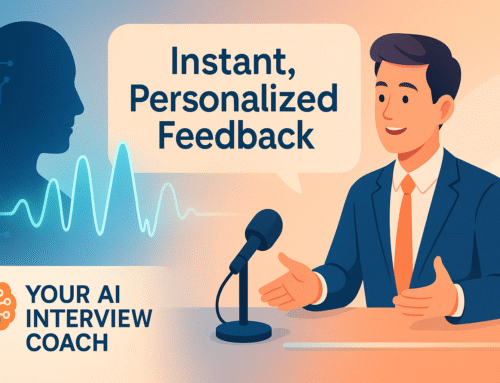69% of human resource departments report that their organizations have skill gaps – and that gap is getting wider. That’s worrying news for organizations that must stay at the forefront of innovation to survive in today’s marketplace. If they continue to experience skill gaps in their workforce, they face the risk of going out of business.
And that’s why more organizations are adopting a culture of continuous learning. A culture of continuous learning is an organizational environment that prioritizes and encourages ongoing skill development. It goes beyond the traditional sporadic training session and instead fosters a mindset of perpetual self-improvement.
The learning often comes through formal training programs, but it can also come from peer-to-peer knowledge sharing or integrated into daily work routines. Various resources and opportunities support learning throughout the organization, like online courses and mentorship programs. Learning new skills becomes on-demand, and employees can develop skills as needed without seeking outside talent.
Employees get to expand their skill set continuously, and businesses benefit from a workforce that’s upskilling from within. It’s a win-win for organizations and employees.
Image by Freepik
Five Benefits Of Continuous Learning In An Organization
Why is continuous learning touted as the next great movement in business? Because while it helps fill in employee skill gaps, it also has some significant benefits for the bottom line.
Flexible And Adaptive Skills Development
The business landscape is evolving faster than ever. What was considered best practice six months ago could now be obsolete. But it’s impractical to hire a new workforce that’s up-to-date on best practices every time they change. Instead, businesses need employees who can adapt to those changes quickly. Adaptation requires upskilling, helping the organization quickly pivot from one thing to the next without waiting for new talent to onboard. A continuous learning culture allows employees to learn new skills that align with the organization’s evolving needs. For example, in good restaurants they take restaurant management courses that help to adjust to any update.
Higher Employee Satisfaction And Engagement = Higher Employee Retention
Organizations that invest in employee development demonstrate a commitment to their success and gain loyalty. Employees with access to continuous learning opportunities are more likely to feel valued and supported in the organization. Employees who engage in ongoing learning and development gain a sense of purpose and achievement, which can lead to greater job satisfaction and, ultimately, lower turnover rates within the company.
More Top Performers = Better Company Performance
High-performers are the people you want working for your company, and they are the ones that are attracted to cultures of continuous learning. High-performing individuals are self-motivated to enhance their skills; the organization just has to give them the opportunity to do it. 48% of workers in the United States say they’d consider changing jobs if offered the chance to upskill.
With a culture of continuous learning, an organization can attract top performers and develop a higher-performing workplace. When employees continuously improve their skills, the organization’s collective knowledge increases, positively impacting company performance.
Opportunities For Career Growth And Personal Development
Employees want to work for organizations that invest in their long-term career growth. The culture helps employees enhance their professional capabilities, making them more loyal and committed to the organization. Continuous learning gives employees a clear path for advancement and development, giving them different opportunities to expand their skill set in the areas they are most interested in. They can stay in one organization but have options to experience new jobs and positions while still being long-term assets for the business.
Enhanced Innovation And Adaptability
Continuous learning encourages a mindset for innovation. Learning new skills can help employees gain new perspectives, insights, and ideas. When an organization empowers employees to acquire new skills, the employees become more open to creative ideas and exploring new approaches to old problems.
Continuous learning nurtures collaboration and encourages teams to share insights and skills with others. That can lead to an increased ability to overcome challenges, identify new opportunities, and innovate as an organization. That can help the business pivot when needed while also experiencing growth.
How To Build A Culture Of Continuous Learning In Your Organization?
Building a culture of continuous learning doesn’t have to be complicated. It’s something the workforce already wants. Employees want training that is impactful and helps them do their jobs better. The biggest challenge in fostering the culture is knowing how to create and deliver the material in an effective and efficient way.
Start by providing impactful training that allows employees to excel in their roles and is directly related to their job responsibilities. Provide internal training programs, cross-functional projects, and learning resources that help employees upskill and reskill continually. Regularly review the content to ensure it is up-to-date with industry trends and advancements. Regular review will ensure employees stay at the forefront of their fields and upskill or reskill using best practices.
Build internal resources by empowering internal subject matter experts (SMEs) to create training content. By tapping into the expertise of their own employees, organizations can encourage peer-to-peer learning and ensure that training materials are tailored to the organization’s specific needs and business goals. This enhances the relevance of the content and fosters a sense of ownership and collaboration among employees.
Internal SMEs aren’t instructional design experts, though. You have to give them the tools they need to create the material. Leverage the power of generative AI technology to support them in this task. Generative AI can assist them in structuring the content, creating assessments, and ensuring the material effectively teaches new skills. Simplifying the content creation process empowers internal SMEs to share their knowledge.
Invest in collaborative learning tools if you are serious about fostering continuous learning within an organization. These can streamline your L&D initiatives. Look for a comprehensive learning platform that provides easy access to learning resources, facilitates skill sharing, and encourages collaboration.






Leave A Comment